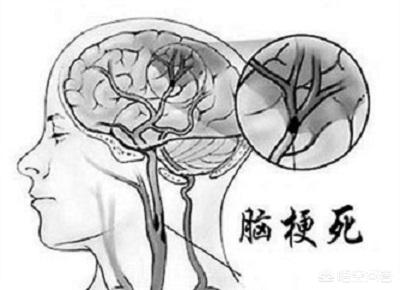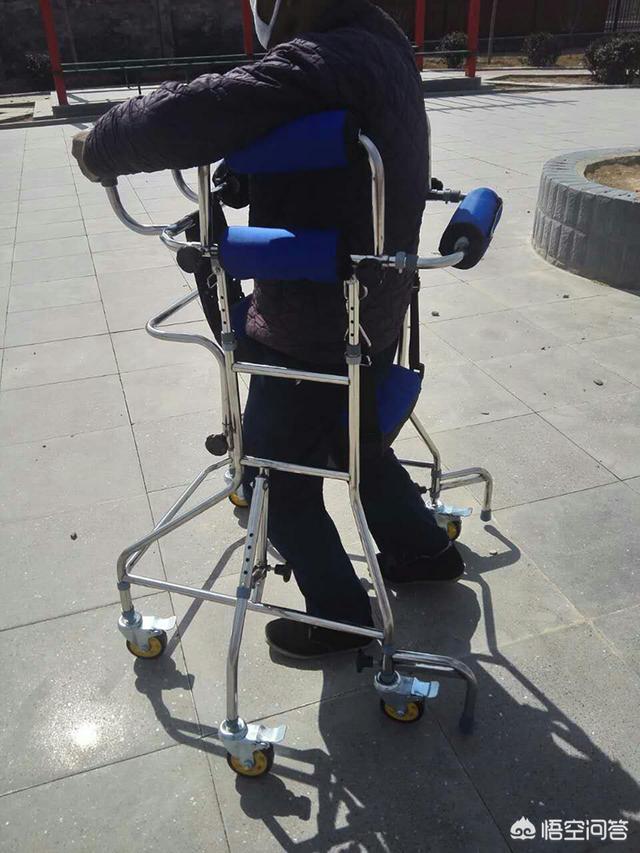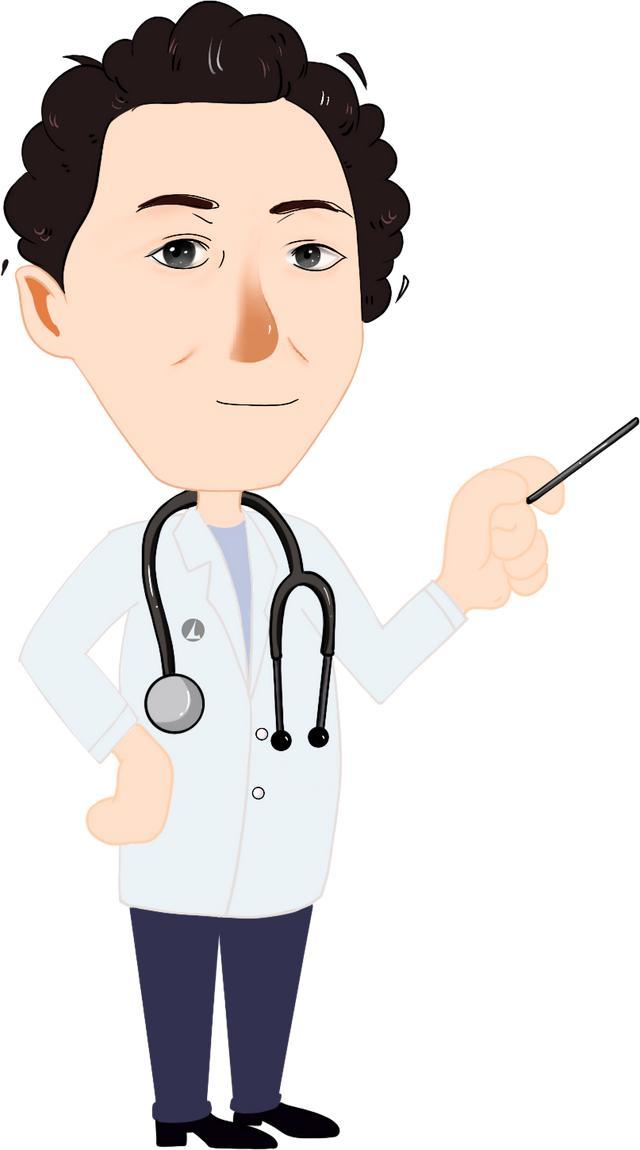What factors are associated with the occurrence of cerebral infarction?
First of all, let's talk about the concept of cerebral infarction. Cerebral infarction, also known as cerebral infarction, refers to the local brain tissue due to blood supply obstacles, ischemia and hypoxia caused by necrosis and softening of brain tissue. Commonly atherosclerotic thrombotic cerebral infarction, (cerebral thrombosis). Cerebral embolism, watershed brush infarction, lacunar infarction and so on. Of these, cerebral thrombosis is the more common. Due to its high incidence and disability rate it is now the second most common cause of dementia, the most common cause of epilepsy in the elderly, and the most common cause of depression.
The occurrence of cerebral infarction is influenced by a number of factors. Among them, cerebral atherosclerosis, hypertension, high cholesterol and smoking are the most influential risk factors. In addition, it is related to organic factors, lifestyle, disease, psychosocial factors and the combined effect of multiple factors.
1. Organismal factors (1) gender and age: atherosclerosis is the pathologic basis for the development of cardiovascular and cerebrovascular diseases. The incidence of atherosclerosis in women is higher than that in men after the age of 40 due to the protection of estrogen level. It gradually approaches that of men after menopause. (2) Overweight and obesity: obesity can have an impact on all systems of the body, and the damage to the cerebrovascular system is the most common. Obesity causes lipid metabolism disorders, easy to occur atherosclerosis. (3) Heredity. There is a family history of stroke in the population with a significantly higher incidence rate.
2. Disease factors (1) Hypertension: It is also one of the main risk factors for cerebral infarction. Studies have shown that the risk of cerebrovascular hypertension increases with the increase of blood pressure, which is 13.1 times higher than that of normal people. Especially, the risk is greater for those whose blood pressure increases persistently or fluctuates sharply. (2) Hyperlipoproteinemia: refers to an increase in one or more lipoproteins in the serum. (3) Diabetes: cerebrovascular disease is the most common and dangerous disease in diabetic patients. (4) Heart disease: poor cardiac function can directly or indirectly cause cerebral infarction, especially in patients with coronary heart disease. The risk of cerebral infarction is five times higher than that of people without coronary heart disease.
3. Behavioral factors (1) Smoking: The risk of cerebral infarction in men who smoke heavily is almost three times that of non-smokers. Young men who smoke more than 20 cigarettes a day have twice the risk of cerebral infarction than non-smokers at any blood pressure level. Therefore, smoking has been recognized as a risk factor for cardiovascular and cerebrovascular diseases. (2) Alcohol consumption: On the basis of arteriosclerosis, drinking a lot of alcohol with emotional excitement can often lead to cerebral infarction. (3) Diet: High sodium load and insufficient calcium intake in the diet are risk factors for cerebral infarction. (4) Exercise: Reduced physical activity and excess fat promote atherosclerosis, which may lead to cerebral infarction.
4. Psychosocial factors (1) Occupation: Occupations that require a high degree of concentration and chronic visual and auditory stimulation can raise blood pressure, leading to a higher incidence of cerebral infarction. (2) Character: Studies have shown that the personality traits of type A characters can affect the concentration of triglycerides in the blood, thus promoting atherosclerosis and the occurrence of cerebral infarction.
5. Meteorological factors: cold is an important risk factor for cardiovascular and cerebrovascular diseases. The incidence rate increases significantly during the cold season and when the temperature drops sharply.
The results of the study showed that the more risk factors there are, the higher the risk risk of having a cerebral infarction.
May I share more of my knowledge with you and thank you for passing by.
Cerebral infarction is a serious threat to people's life and health because the arteries supplying blood to the brain undergo atherosclerosis or form blood clots, leading to necrosis of brain tissues due to ischemia, and is therefore called ischemic stroke in medical terms.
Most patients with cerebral infarction will suffer from paraplegia, numbness of limbs, slurred speech, etc., and in severe cases, they will lose the ability to take care of themselves. Patients with cerebral infarction who are bedridden for a long period of time will also suffer from a series of complications, which will cause the failure of various organs and eventually lead to death.

The cause of cerebral infarction is mostly the same as the cause of myocardial infarction, which is atherosclerosis. The attention triggers of atherosclerosis are chronic diseases that jeopardize cardiovascular and cerebrovascular health, such as high blood lipids, high blood pressure, diabetes and gout. Therefore, long-term effective control of blood lipids, blood pressure, blood glucose and blood uric acid levels is the basis for the prevention of cerebral infarction. In addition, for patients who have already developed cardiovascular and cerebrovascular lesions, receiving antiplatelet therapy under the guidance of a doctor can prevent the formation of blood clots and is one of the main measures to prevent the recurrence of cerebral infarction.
Bad habits are also one of the main causes of atherosclerosis. These bad habits include: high-fat, high-salt, high-sugar diet; low intake of fresh vegetables and fruits; lack of physical exercise, overweight or obesity; long-term heavy smoking, drinking; irregular lifestyle, often stay up late, sleep deprivation; emotional fluctuations, unable to maintain a good state of mind and so on.
Another group of people who are particularly susceptible to cerebral infarction is those who have problems with atrial fibrillation. Atrial fibrillation tends to dislodge blood clots in the heart, blocking the arteries that supply blood to the brain. In addition to actively treating the underlying disease, anticoagulation therapy under the supervision of a doctor is also essential for preventing cerebral infarction in patients with atrial fibrillation.
We may be more familiar with hemiplegia, in fact, hemiplegia is mostly the sequelae of cerebral infarction, cerebral infarction is defined as limited ischemic necrosis or softening of brain tissues due to the blood supply obstacle in the brain, caused by ischemia and hypoxia. Cerebral infarction clinically common is cerebrovascular lesions, that cerebral infarction occurs with which factors have a relationship?
First, people with the three high diseases, high blood pressure, high blood fat and high blood sugar patients, have a higher probability of having a cerebral infarction. Because long-term high blood pressure, high blood fat easily lead to atherosclerosis, over time will lead to cerebral blood vessel narrowing, or even obstruction, supplying the brain tissue of the main blood vessel branch obstruction will cause cerebral infarction.
Secondly, people with family history of cerebral infarction and congenital cerebrovascular malformation are prone to cerebral infarction. Some patients have a family history of cerebral aneurysm, cerebral vascular developmental malformation, etc., congenital narrowing of cerebral blood vessels, resulting in insufficient cerebral blood supply causing cerebral infarction.
Thirdly, polycythemia, obesity is also a good incidence of cerebral infarction. Polycythemia vera refers to a state of increased red blood cells and increased red blood cell volume; blood is easy to be in a highly viscous state, which is unfavorable to blood circulation in the brain. In addition, obesity will cause lipid accumulation, aggravate vascular endothelial damage, easy to cause cerebral infarction.
Fourth, the influence of emotional and mental factors, long-term in the high-intensity pressure state, long-term emotional tension, depression is easy to trigger cerebrovascular disease, emotional over-excitement is easy to develop.
Fifthly, overworked elderly people are prone to cerebral infarction, for example, after long-distance trekking and prolonged late-night overtime work, which may cause spasms of blood vessels, adding to the already narrowed cerebral blood vessels, leading to insufficient cerebral blood supply, and triggering cerebral infarction in serious cases.
In the event of a cerebral infarction, urgent transportation to the neurology department of a hospital within 6 hours for emergency thrombolysis is critical for patients under the age of 60 years to save some of the dying brain tissue, and it can greatly reduce complications and make the symptoms of hemiplegia significantly less severe.

Click on the bottom of the page [Learn More] to see more answers or ask the doctor a question for free!
Follow "Family Doctor Online" headline, more health Q&A easy to see~~~~
There are many factors that contribute to the formation of cerebral infarction. Clinical confirmation of the diagnosis is a difficult task because treatment options can vary for different causes of cerebral infarction.
Cerebral infarction patients in the brain area because of the lack of blood supply and tissue necrosis, and then a series of loss of function, when the acute attack of cerebral infarction, both critical and urgent, this time need to fight with the god of death and time, the patient's prognosis and the time of resuscitation is directly proportional to the earlier to get resuscitated, open the circulation of the blood, the better the result, and the other way around, the more late the time of the resuscitation, the end is more not optimistic, and even threatened their own lives. The earlier the resuscitation, the better the outcome.

What are the factors that may be associated with cerebral infarction?
1, diet: when the patient has a long-term diet irregularity, often consume some high salt, high fat, high sugar, high heat food, it is easy to cause atherosclerosis, lipid deposition, accelerate the formation of plaque thrombus, and then block the blood vessels, affecting the normal flow of blood.
2, work and rest: long stay up late, irregular rest time people, will let their nervous system disorders, normal work and rest habits of people, its sympathetic and parasympathetic nerves will always maintain a "resting mechanism", either excited or inhibited, and often stay up late will destroy this mechanism, which affects its innervation of blood vessels, spasm, contraction, blockage. Constriction and blockage.
3, tobacco and alcohol: quit smoking and alcohol is a cliché, smoking will stimulate the sympathetic nerves, so that its excitement disorder, and alcohol intake will make the drinker's blood pressure rise quickly, even if taking antihypertensive drugs also have little effect, which induced the emergence of cerebral infarction.
4, spine: the spine is a whole, in which the most likely to affect the cerebral infarction is the cervical spine, after all, its location is more special, is the heart to the brain blood supply must pass through the road, once there is a lesion (protruding, hyperplasia, stenosis, distortion, etc.), it will be compressed and stimulated to the nerve root, which will make the vascular spasm contraction, impede the flow of blood, the brain insufficient blood supply phenomenon, triggered by the cerebral infarction.

I hope my answer will help you!
If there's anything you don't understand, comment and private message me!
Cerebral infarction, a reversible disease, which is mostly related to the blood, the veins. First of all, excessive fatigue, which is the closest friend of cerebral stroke, is the culprit that makes the heart stuck. Furthermore, long-term blood pressure is too high or low, can lead to slow blood flow, blood oxygen concentration is too low, while the blood concentration increases and viscous, causing the blood veins should be acute spasm, obstruction, resulting in infarction, or overflow of blood. Changes in its external environment, such as prolonged high temperature, excessive loss of water Na, microcirculation function suddenly reduced, caused by D ⅰ C, so that the brain hypoxia, can also occur cerebral hernia, cerebral infarction. Causes of cerebral infarction, there are endogenous, such as blood pressure is too low, or suddenly high, emotional changes. There are also exogenous, such as poisoning, fall, heat stroke, climate change. It is quite complicated. Limit the space, can be a private message exchange, discussion.
Cerebral infarction is a common cerebrovascular accident, which is highly prevalent among middle-aged and elderly people. The onset of cerebral infarction is relatively rapid, patients often burst into action, the symptoms reach a peak in a short period of time, and a small number of patients show progressive deterioration, which is a serious threat to the life and health of the patients.
What factors are associated with the occurrence of cerebral infarction?
When a cerebral infarction occurs, patients are often left with serious after-effects even after treatment. Especially for high-risk groups, it is important to pay attention to the prevention of cerebral infarction. Cerebral infarction occurs as a result of a combination of many factors, and it is important to pay attention to the prevention of related risk factors.

1. Disease factors:Cerebral infarction is highly prevalent in middle-aged and elderly people because it is often accompanied by underlying diseases such as hypertension, hyperlipidemia, hyperglycemia, obesity, atherosclerosis, etc., which are high-risk factors that accelerate vascular disease and lead to the occurrence of cerebral infarction. Among them, high blood pressure can cause damage to the endothelium of blood vessels, inducing lipid accumulation and accelerating the occurrence and development of atherosclerosis; high blood lipids are the culprits leading to atherosclerosis; obesity and high blood glucose can lead to disorders of glucose and lipid metabolism, which can accelerate the accumulation of lipids. All these factors are high-risk factors that lead to hardening and aging of blood vessels, resulting in narrowing or blockage of blood vessels and triggering the occurrence of cerebral infarction. Patients with related diseases should pay attention to the active treatment of primary diseases.

2. Lifestyle factors:Such as long-term intake of high-fat, high-calorie, high-salt, high-sugar food, favor animal food, fried food, etc., have a diet overfilled, overeating and other bad habits; sedentary, serious lack of exercise; long-term stay up late, irregular rest and relaxation; long-term high-pressure, stressful work, over-taxed people; accompanied by anxiety, anger and other bad moods; long-term smoking and drinking people. These people because of long-term improper living habits, often have bad vascular lesions, which will greatly increase the risk of cerebral infarction.
3. Key triggers:Cerebral infarction mostly occurs under certain circumstances, such as weather changes and cold stimulation; overwork and over exertion; strenuous exercise; overeating and overfeeding; violent mood swings; staying up late; heavy drinking and smoking. High-risk groups should pay attention to avoid these risk factors to avoid the occurrence of cerebral infarction.
Cerebral infarction, also known as ischemic stroke, refers to the obstruction of blood supply to the brain due to various reasons, resulting in ischemic and hypoxic necrosis of brain tissues and corresponding neurological deficits.
Cerebral infarction is categorized into cerebral thrombosis, cerebral embolism and lacunar cerebral infarction, with the most common etiologies: cerebral thrombosis for atherosclerosis and arteritis, cerebral embolism for cardiac and non-cardiac emboli, and lacunar cerebral infarction for hypertension, atherosclerosis and microemboli.
Among them, cerebral thrombosis, atherosclerosis is the basic cause, especially atherosclerosis, which is often accompanied by hypertension. Diabetes and hyperlipidemia can also accelerate the process of atherosclerosis.
Cardiogenic emboli of cerebral embolism are mainly seen in atrial fibrillation, cardiac valvular lesions, myocardial infarction, etc. Non-cardiogenic emboli are commonly seen in atherosclerotic plaque dislodgment embolism, fat embolism, air embolism, and cancer embolism.
Hypertension is the main etiologic factor in lacunar cerebral infarction, with elevated diastolic blood pressure being more important.
Follow Dr. Kwan to learn more about medicine.
Cerebral infarction is a neurological dysfunction caused by ischemia and hypoxia in one limb. The prognosis of cerebral infarction is generally related to the following factors:
First, it is related to the size of the blocked blood vessel. If the blocked blood vessel is small, the scope of cerebral ischemia is small, and collateral circulation has been formed, the recovery will be faster and the prognosis will be better; if the blocked blood vessel is larger, the scope is larger, and the damage to the brain tissue is more serious, the recovery will be slower, and the prognosis will be worse.
Second, it is related to the speed of onset. If the onset of the disease is slow, it is easier to form collateral circulation, and cerebral ischemia can be compensated gradually, so the prognosis is better. If the acute onset of the disease fails to establish collateral circulation, the prognosis is poorer.
Thirdly, it is related to the number and quantity of infarction. The prognosis is better for the first attack, worse if there are more than two infarctions, especially if both sides of the cerebral blood vessels are involved, worse if there are more foci of infarction, and better if there is a single foci of infarction.
Fourthly, it is related to the patient's age. If the patient's age is relatively old and the physical condition is poor, the prognosis is poorer, while the prognosis is better for those who are younger and have a better physical condition.
1. High blood pressure:
Hypertension is one of the most likely causes of cerebral infarction. Hypertensive patients have high blood lipid and blood viscosity, when the inner lining of blood vessels is damaged by high blood pressure, cholesterol is easy to enter into the blood vessel wall and gradually deposited over time to form plaques. If no timely action is taken, the plaque tends to increase in size, making the lumen of the blood vessel narrow, affecting the normal functioning of the blood vessel and leading to cerebral ischemia.
2. Irregular routine:
Nowadays, the incidence of cerebral infarction among young people is obviously on the rise, and a large part of the reason is related to their irregular life style. Irregular diet, overeating, and lack of exercise can easily lead to "three highs", which in turn triggers cerebral infarction. In addition, people who are under too much pressure, have too many social functions, are too tired at work, and are chronic alcoholics and smokers are also risk factors for cerebral infarction.
Diabetes:
Cerebral infarction is one of the complications of diabetes. Diabetic patients with high blood glucose, blood lipids and blood viscosity are very prone to vascular lesions, and the symptoms of the "three highs" can lead to slow blood flow, stagnation and atherosclerosis, thus causing cerebral infarction.
Cerebral infarction is a serious threat to people's lives and health, and the consequences of cerebral infarction once the disease is very serious, therefore, we need to have a certain understanding of the causes of cerebral infarction, but also know how to prevent cerebral infarction, do a good job of prevention, and stay away from the disease.
Human blood vessels, with the change of time, will begin to age, blood vessels will undergo a series of changes, usually more common, is the blood vessel "aging", "clogging", because of these changes in the blood vessels, so in turn will occur. "Infarction", people can come into contact with, is also the most common, is "heart attack" and "brain infarction", but compared to the former, the latter in the incidence rate, the severity, to be However, compared to the former, the latter is much higher than the former in terms of incidence and severity, so the prevention of "cerebral infarction" is particularly important. In fact, the life of the diet, and "brain infarction" occurs closely related, if you want to make "brain infarction" is not so easy to commit trouble, these foods do not often go to eat, especially these three kinds of food.
1. Greasy food

The so-called "greasy" food, that is, food containing too much "fat", because this ingredient is very rich in energy, so many times to meet the body's energy needs, but only a little bit can be, the remaining fat will not be directly utilized by the body will continue to accumulate in the blood vessels after a long time will be blocked or the lumen of the blood vessels become narrowed, thus triggering a "cerebral infarction". Will not be directly utilized by the body, it will continue to accumulate in the blood vessels, after a long time will be blocked blood vessels, or the lumen of the blood vessels become narrow, which triggered a "cerebral infarction". People may think that since the body does not utilize it, why not discharge it directly? In fact, our body is sometimes more "stingy", rather than waste, but also try to store, so the last sufferers or blood vessels.
2. Foods high in salt

Salt is our daily food, essential seasonings, no salt, meals have no flavor, but it is this "salty", many people for its "degree" can not be very good control, so it led to the blood vessels followed the damage, in fact, the salt excessive After being ingested by the body, blood pressure will be subject to great fluctuations, and behind the fluctuations, in fact, or blood vessels in the occurrence of lesions, especially aging blood vessels, blood pressure will be directly affected by the greater. Moreover, excessive intake of salt, but also lead to the speed of aging of blood vessels, so in ordinary life, if there is a "cerebral infarction" risk of people, should be light, and should not be based on a high salt diet.
3. High-sugar foods

Too sweet food will satisfy the body's energy needs, but excessive intake of sweets, sugar will eventually be converted in the body, excess energy will change into fat, which will accumulate in the blood vessels, after a long time, will also make the lumen of the blood vessels become narrower, which increases the chances of "cerebral infarction".
This question and answer are from the site users, does not represent the position of the site, such as infringement, please contact the administrator to delete.